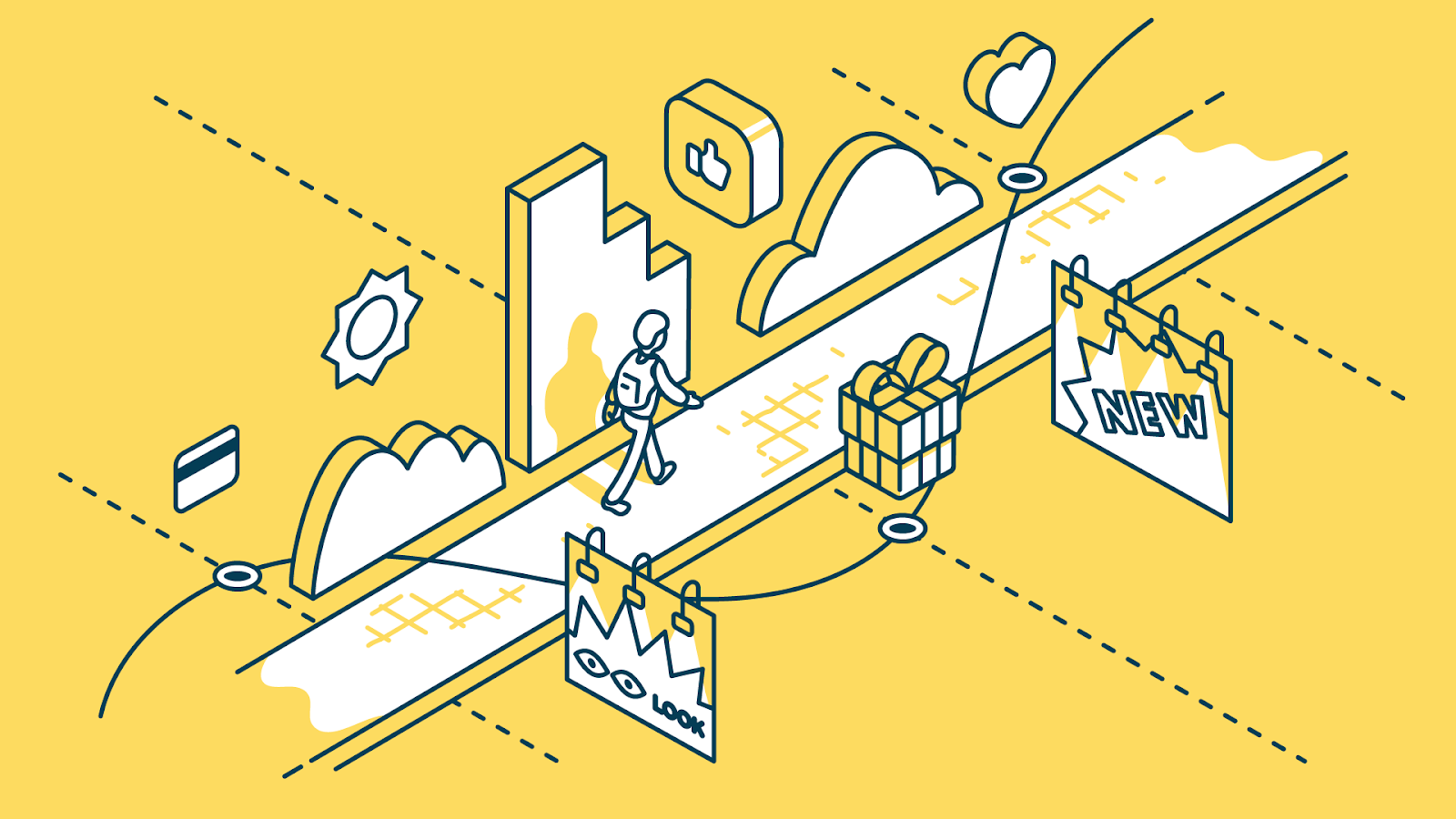Table of Contents
In the ever-evolving landscape of B2B (business-to-business) commerce, understanding your customers is paramount. One of the most effective tools for achieving this understanding is the B2B customer journey map. This navigational tool helps businesses chart the course of their customers’ interactions, needs, and experiences, ultimately leading to successful and mutually beneficial relationships.
What is a B2B Customer Journey Map?
A B2B customer journey map is defined as a visual representation that outlines the entire lifecycle of a business’s relationship with its customers. It delves into every touchpoint, interaction, and experience that a customer has with your company, from their initial awareness of your brand to post-purchase support and ongoing engagement. This mapping process helps businesses gain deeper insights into their customers’ needs, emotions, and expectations, thus improving their products, services, and overall customer experience.
The Benefits of B2B Customer Journey Mapping
Enhanced Customer Understanding: By mapping the customer journey, businesses gain an in-depth understanding of their customers’ behaviors, preferences, and pain points. This knowledge is invaluable for tailoring products and services to meet their specific needs.
- Improved Customer Experience: When you comprehend your customers’ journey, you can design a more seamless and engaging experience for them at every touchpoint. This not only enhances satisfaction but also fosters loyalty.
- Alignment of Marketing and Sales Efforts: A well-constructed customer journey map ensures that marketing and sales teams are on the same page. It helps in aligning their strategies and resources for maximum impact.
- Identification of Pain Points: Journey maps reveal where customers may face frustration or confusion during their interaction with your brand. This enables you to address these pain points and enhance overall satisfaction.
- Data-Driven Decision Making: Mapping the customer journey involves collecting data at various stages. This data is a valuable resource for making informed decisions and continuous improvement.
Learn more: What is a Customer Journey Map?
Steps to Create a B2B Customer Journey Map
Identify Personas: Begin by identifying your key customer personas. These are fictional representations of your ideal customers, and they help you understand different customer needs and behaviors.
- Touchpoint Analysis
List all the touchpoints where a customer interacts with your brand. These can include website visits, social media interactions, email exchanges, phone calls, and more.
- Collect Data
Gather data about customer behavior, preferences, and emotions at each touchpoint. You can accomplish this by using surveys, conducting interviews, and analyzing feedback from customers.
- Map the Journey
Create a visual representation of the customer journey, starting from the initial awareness stage to post-purchase support and beyond. Use various tools such as flowcharts, diagrams, or specialized software.
- Highlight Pain Points and Opportunities
Identify pain points and opportunities for improvement at each stage. This can include areas where customers may be dissatisfied, confused, or delighted.
- Design Improvements
Based on the insights gained, design strategies and improvements to enhance the customer experience. Make certain that these adjustments are in accordance with your business objectives.
Implement and Monitor: Put your proposed improvements into action and monitor the results. Stay prepared to adjust and fine-tune your strategy as circumstances require.
Examples of B2B Customer Journey Maps
- Software as a Service (SaaS) Company: The journey map for a SaaS company may start with a potential client’s awareness of the need for a software solution. It continues through their research, trial, purchase, onboarding, and ongoing customer support.
- Manufacturing Company: For a manufacturing business, the customer journey could involve stages like product discovery, negotiations, purchase, product delivery, and post-sale maintenance.
- Consulting Firm: A consulting firm’s customer journey may include initial contact, needs assessment, proposal, project execution, and follow-up support.
In each of these cases, understanding the unique customer journey is critical for tailoring the customer experience and building long-lasting, fruitful relationships.
Learn more: What is a Business Roadmap?
Conclusion
In the dynamic world of B2B commerce, success is closely tied to your ability to understand and cater to your customers. The B2B customer journey map is an indispensable tool for achieving this understanding. By meticulously tracing every step of your customer’s interaction with your business, you can create a more satisfying and tailored experience.
Ultimately, this leads to not only increased customer satisfaction but also long-term loyalty and success in the B2B marketplace. Start mapping your B2B customer journey today, and chart a course towards prosperous relationships with your clients.
Most Recent Posts
Explore the latest innovation insights and trends with our recent blog posts.













